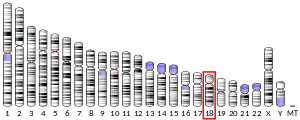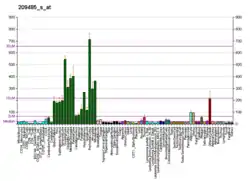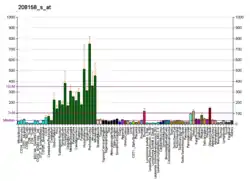| OSBPL1A | |||||||||||||||||||||||||||||||||||||||||||||||||||
|---|---|---|---|---|---|---|---|---|---|---|---|---|---|---|---|---|---|---|---|---|---|---|---|---|---|---|---|---|---|---|---|---|---|---|---|---|---|---|---|---|---|---|---|---|---|---|---|---|---|---|---|
| Identifiers | |||||||||||||||||||||||||||||||||||||||||||||||||||
| Aliases | OSBPL1A, ORP-1, ORP1, OSBPL1B, oxysterol binding protein like 1A | ||||||||||||||||||||||||||||||||||||||||||||||||||
| External IDs | OMIM: 606730 MGI: 1927551 HomoloGene: 84746 GeneCards: OSBPL1A | ||||||||||||||||||||||||||||||||||||||||||||||||||
| |||||||||||||||||||||||||||||||||||||||||||||||||||
| |||||||||||||||||||||||||||||||||||||||||||||||||||
| |||||||||||||||||||||||||||||||||||||||||||||||||||
| |||||||||||||||||||||||||||||||||||||||||||||||||||
| |||||||||||||||||||||||||||||||||||||||||||||||||||
| Wikidata | |||||||||||||||||||||||||||||||||||||||||||||||||||
| |||||||||||||||||||||||||||||||||||||||||||||||||||
Oxysterol-binding protein-related protein 1 is a protein that in humans is encoded by the OSBPL1A gene.[5][6][7]
This gene encodes a member of the oxysterol-binding protein (OSBP) family, a group of intracellular lipid receptors. Most members contain an N-terminal pleckstrin homology domain and a highly conserved C-terminal OSBP-like sterol-binding domain, although some members contain only the sterol-binding domain. Transcript variants derived from alternative promoter usage and/or alternative splicing exist; they encode different isoforms.[7]
References
- 1 2 3 GRCh38: Ensembl release 89: ENSG00000141447 - Ensembl, May 2017
- 1 2 3 GRCm38: Ensembl release 89: ENSMUSG00000044252 - Ensembl, May 2017
- ↑ "Human PubMed Reference:". National Center for Biotechnology Information, U.S. National Library of Medicine.
- ↑ "Mouse PubMed Reference:". National Center for Biotechnology Information, U.S. National Library of Medicine.
- ↑ Xu Y, Liu Y, Ridgway ND, McMaster CR (May 2001). "Novel members of the human oxysterol-binding protein family bind phospholipids and regulate vesicle transport". J Biol Chem. 276 (21): 18407–14. doi:10.1074/jbc.M101204200. PMID 11279184.
- ↑ Laitinen S, Olkkonen VM, Ehnholm C, Ikonen E (Feb 2000). "Family of human oxysterol binding protein (OSBP) homologues. A novel member implicated in brain sterol metabolism". J Lipid Res. 40 (12): 2204–11. doi:10.1016/S0022-2275(20)32095-2. PMID 10588946.
- 1 2 "Entrez Gene: OSBPL1A oxysterol binding protein-like 1A".
Further reading
- Lehto M, Laitinen S, Chinetti G, et al. (2001). "The OSBP-related protein family in humans". J. Lipid Res. 42 (8): 1203–13. doi:10.1016/S0022-2275(20)31570-4. PMID 11483621.
- Jaworski CJ, Moreira E, Li A, et al. (2002). "A family of 12 human genes containing oxysterol-binding domains". Genomics. 78 (3): 185–96. doi:10.1006/geno.2001.6663. PMID 11735225.
- Strausberg RL, Feingold EA, Grouse LH, et al. (2003). "Generation and initial analysis of more than 15,000 full-length human and mouse cDNA sequences". Proc. Natl. Acad. Sci. U.S.A. 99 (26): 16899–903. Bibcode:2002PNAS...9916899M. doi:10.1073/pnas.242603899. PMC 139241. PMID 12477932.
- Johansson M, Bocher V, Lehto M, et al. (2004). "The two variants of oxysterol binding protein-related protein-1 display different tissue expression patterns, have different intracellular localization, and are functionally distinct". Mol. Biol. Cell. 14 (3): 903–15. doi:10.1091/mbc.E02-08-0459. PMC 151568. PMID 12631712.
- Ota T, Suzuki Y, Nishikawa T, et al. (2004). "Complete sequencing and characterization of 21,243 full-length human cDNAs". Nat. Genet. 36 (1): 40–5. doi:10.1038/ng1285. PMID 14702039.
- Johansson M, Lehto M, Tanhuanpää K, et al. (2006). "The oxysterol-binding protein homologue ORP1L interacts with Rab7 and alters functional properties of late endocytic compartments". Mol. Biol. Cell. 16 (12): 5480–92. doi:10.1091/mbc.E05-03-0189. PMC 1289395. PMID 16176980.
- Olsen JV, Blagoev B, Gnad F, et al. (2006). "Global, in vivo, and site-specific phosphorylation dynamics in signaling networks". Cell. 127 (3): 635–48. doi:10.1016/j.cell.2006.09.026. PMID 17081983. S2CID 7827573.
This article is issued from Wikipedia. The text is licensed under Creative Commons - Attribution - Sharealike. Additional terms may apply for the media files.





